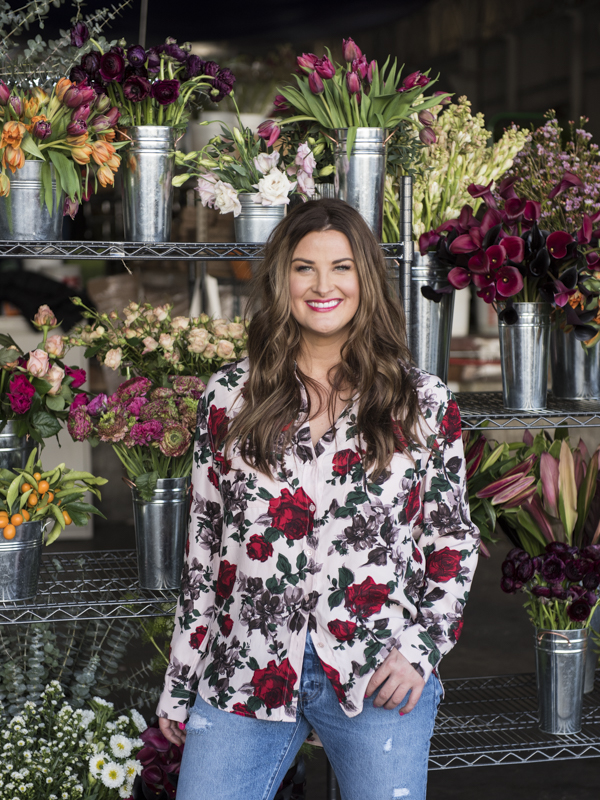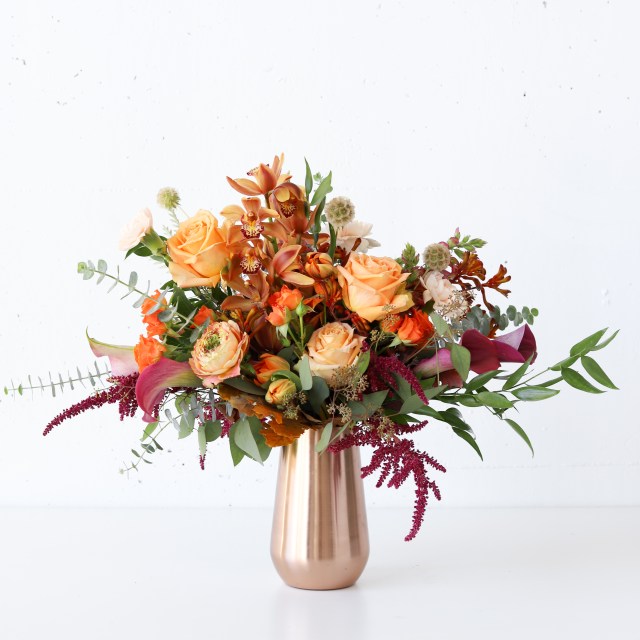
Farmgirl Flowers’ limited “menu” approach is a blooming success
Farmgirl Flowers’ limited “menu” approach is a blooming success

After being let down by the leading e-commerce companies time after time, Christina Stembel decided the flower industry needed innovating. That’s when she started Farmgirl Flowers from her dining room table and with her personal savings in 2010.
Her business model is inspired by In-N-Out Burgers’ menu, the primarily West Coast fast food chain.
“They just do what they do, and they do really well,” Stembel told “Marketplace’s” Amy Scott. “And they always have a really long wait.”
Like In-N-Out’s basic menu with only a handful of options, Stembel’s flower company only carries a select number of curated daily arrangements. Customers choose an arrangement style rather than specific flowers.
Nine years later, her direct-to-consumer flower business is flourishing and will hit $30 million in revenue by the end of this year.
The following is an edited transcript of Scott and Stembel’s conversation.
Amy Scott: So you started with $49,000 in savings, no degree, no outside capital, no credit. And a year and a half in you were pretty much broke. How did you do this?
Christina Stembel: Yeah, I started out with $49,000 of personal savings, and that savings was like for me to live on as well. So it went really quickly. About a year and a half in, like you mentioned, I was down to $411 in my bank account and didn’t know how I was going to pay rent and anything else. And, thankfully, I’m really good with money and just really was frugal and was able to keep it going. Even though there’s been many times where I’m like, “This is the hardest thing I’ve ever done is not running out of money for my company.” We reinvest all of our profits back into the company for our growth, and we grow it as quickly as we can in a really healthy way. It’s a weird narrative that we now have, where we think that you have to have outside funding in order to be successful. And I just don’t think that’s the case. This is how companies used to be started and run, you know. There wasn’t all this venture-capital backed companies back in the day, and that’s what we’re doing today.
Scott: One strategy, though, is really interesting. You’ve become very adept at using credit card rewards to fund your business to the point where you actually became a spokesperson for Capital One?
Stembel: Yeah, yeah. I just look for alternative ways to be able to run the company financially. You know, I should mention I tried to raise outside capital. I was not successful. As a female, I have less than a 2% chance of raising capital, and so received over 100 noes and just decided that I wasn’t going to waste any more time and I just needed to figure out different ways to do it.
Scott: And how much cash back have you managed to get?
Stembel: I mean, this year alone, it’ll probably be about $300,000 in cash back. So it’s significant.

Scott: You’ve done a lot to streamline the business in some ways, you know, cutting out the middleman. But looking at your website, your prices are still pretty high. I think the least expensive bouquet I saw was 50 bucks. Why are flowers so expensive?
Stembel: Yeah, it’s funny, because when I first started researching the flower space, that was my first question to us, like, why do these cost so much? There’s a lot of work that goes into growing those flowers, harvesting those flowers, shipping those flowers or trucking those flowers — or both — to coming to us and then being unloaded and processed and designed and, you know, put into boxes and shipped out. It has to change so many hands to get to the end consumer from the grower. And all of those people need to be paid, they need to be paid fair wages. And so, you know, we’re never going to be the cheapest bouquet because we believe strongly in hiring full-time employees with benefits and retirement plans. I think we, as Americans, [our] purchasing has kind of shifted where we think shipping should be free, but it actually shouldn’t be. Because when you order a bouquet from us today before noon, it can go from San Francisco to New York City, like to Fifth Avenue, by 10 o’clock tomorrow morning, and that’s really expensive.
Scott: A lot of Americans are starting to question whether we should be shipping things from San Francisco to New York and are interested in shopping locally. Could that be a problem for your business?
Stembel: You know, I’m all for supporting local whenever possible. I think that it’s a bit short sighted when we just think of just going into the corner market and what we’re buying there, because where were those products made? So I believe more in voting with our dollars and knowing the type of company that we’re buying from. Whether that be near or far, and how they’re sourcing, where they’re getting their products, how they’re treating their teams, things like that. And so it’s really just, you know, understanding the ripple effect of who you’re supporting with their dollars and what they’re doing with those dollars, in my opinion.

Scott: So almost 10 years after you set out to start a business, what do you worry about now?
Stembel: Oh, so much [laughs]. So, yeah, we just hit our nine-year mark. And, you know, it’s even harder now than it was the first two years. Back then, every book I read and everything I heard was, you know, just get through the first two years, they’re the hardest in a business. And so I really naively thought that at the end of two years, there’s going to be this big light at the end of the tunnel, and it was going to be so much easier, and it didn’t happen. So what did happen was I started hiring many more team members, and the bills went from being a couple thousand dollars to hundreds of thousands of dollars. And so what I found was the bigger we get, the bigger the challenges are, and the bigger the unplanned expenses are, and just the unknown. And you know, there’s usually between half a million and a million dollars of unplanned expenses at least every year. So what are those going to be? And can I mitigate it? You know, all the business things that come with running a business where you’re responsible for human beings.
There’s a lot happening in the world. Through it all, Marketplace is here for you.
You rely on Marketplace to break down the world’s events and tell you how it affects you in a fact-based, approachable way. We rely on your financial support to keep making that possible.
Your donation today powers the independent journalism that you rely on. For just $5/month, you can help sustain Marketplace so we can keep reporting on the things that matter to you.


















